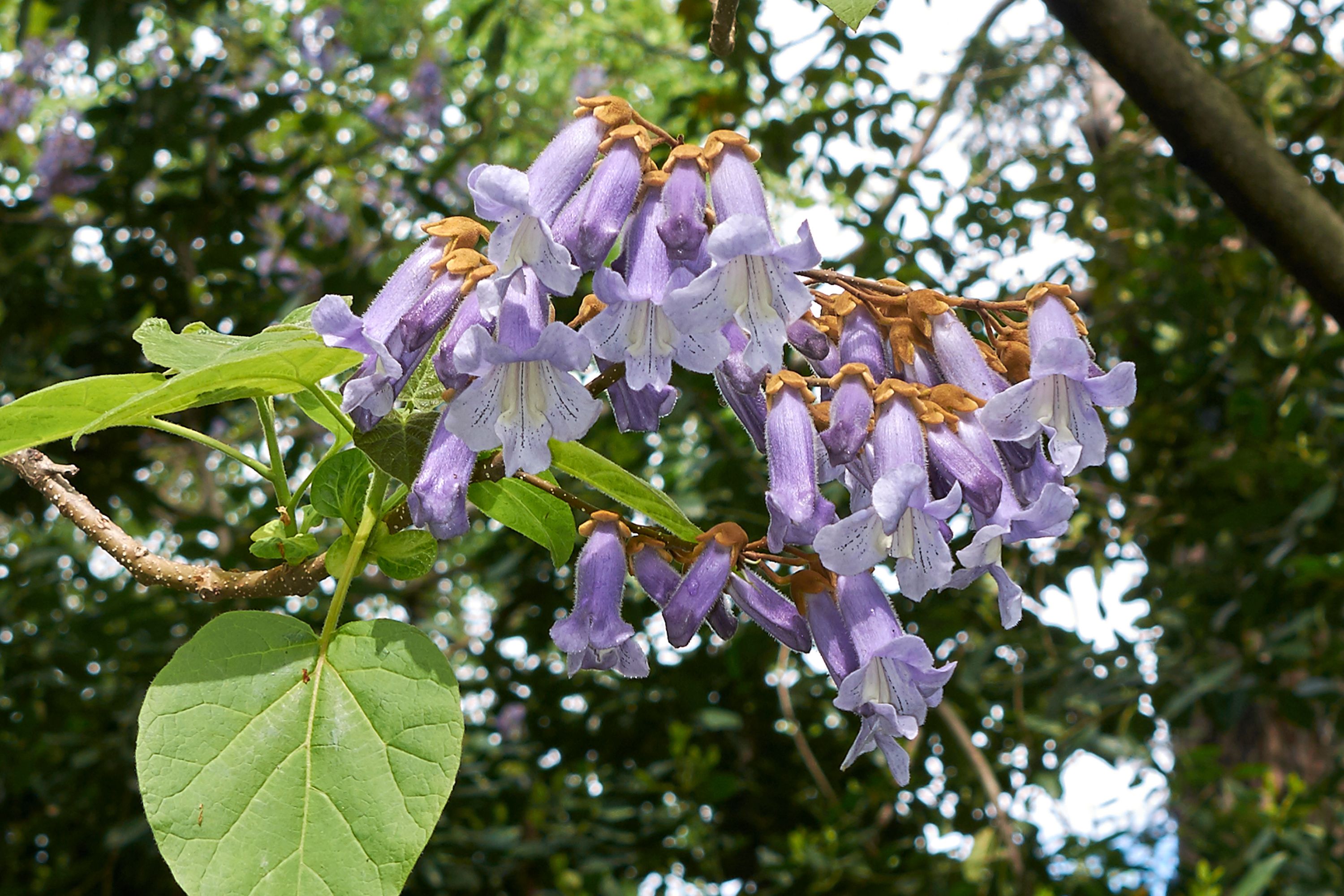Empress tree
(Paulownia tomentosa)

Description
Paulownia tomentosa is a deciduous tree that is native to China, where it is commonly known as the "empress tree" or "princess tree." This tree has been cultivated for centuries for its valuable timber, fast growth, and beautiful flowers. In recent years, it has become popular in other parts of the world as an ornamental tree, as well as for its potential as a source of biofuel and carbon sequestration. Description Paulownia tomentosa can reach heights of up to 30 meters (100 feet) and can have a trunk diameter of up to 1 meter (3 feet). The tree has a broad, spreading crown and a straight, cylindrical trunk. The bark is grayish-brown and fissured, with a corky texture. The leaves are large, up to 50 centimeters (20 inches) long and 30 centimeters (12 inches) wide, and are arranged in opposite pairs. The leaves are hairy on both sides, giving the tree its species name "tomentosa," which means "hairy" in Latin. The flowers of Paulownia tomentosa are produced in large panicles that can be up to 50 centimeters (20 inches) long. The flowers are tubular, with a purple-blue color and a sweet fragrance. The tree blooms in early spring before the leaves emerge, making it an attractive ornamental tree. Distribution and Habitat Paulownia tomentosa is native to China, where it is found in the central and western regions of the country. The tree grows in a wide range of habitats, from dry hillsides to moist riverbanks, and can tolerate a wide range of soil types. The tree is often found growing in disturbed areas, such as along roadsides or in abandoned fields. Cultivation Paulownia tomentosa is a fast-growing tree that can grow up to 3 meters (10 feet) in a single year. The tree can be propagated by seed or by cuttings, although seed propagation is more common. The seeds are small, with a tuft of hairs on one end that aids in dispersal by the wind. Paulownia tomentosa prefers a sunny location and well-drained soil, although it can tolerate some shade and a wide range of soil types. The tree is not very tolerant of frost and is best suited to temperate or subtropical climates. In areas with severe winters, the tree may die back to the ground each year and resprout from the base in the spring. Uses Timber: Paulownia tomentosa is valued for its lightweight, strong, and warp-resistant wood, which is used for furniture, musical instruments, and construction. The wood is also used for paper pulp and as a source of charcoal. Ornamental: The tree is grown as an ornamental tree in parks and gardens for its beautiful flowers and fast growth. Biofuel: Paulownia tomentosa is being studied as a potential source of biofuel due to its fast growth and high biomass production. The tree can be grown in monoculture plantations and harvested for energy production. Carbon sequestration: Paulownia tomentosa is being studied as a potential tool for carbon sequestration, as the tree can absorb large amounts of carbon dioxide from the atmosphere and store it in its wood. Conclusion Paulownia tomentosa is a valuable tree species that has a wide range of uses, from timber production to carbon sequestration. The tree's fast growth and adaptability make it an attractive option for reforestation and land restoration projects. As interest in renewable energy and carbon sequestration continues to grow, the potential of Paulownia tomentosa as a tool for addressing these challenges is very exciting for researchers.
Taxonomic tree:







